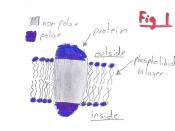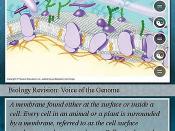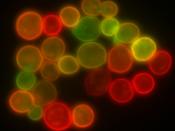ýGive an account of the structure and properties of Biological membranes. Include details of the modifications of membrane structure found in different specialised cells and organellesý
The Fluid Mosaic model was codified by Singer and Nicolson in 1972. It describes the structure and properties of the cell membrane very simply. Every membrane consists of a Phospholipid bilayer. This is simply two layers of phospholipid molecules that come together due to their unique properties.
The heads of the phospholipids are hydrophilic and the tails, hydrophobic. This structure means that the membrane forms quickly, is very strong, but also gives it the property of fluidity as the phospholipids can diffuse freely laterally and flow past each other. Fatty acids in the membrane can lower melting point which will increase the fluidity of the membrane.
Scattered in amongst the phospholipids are protein molecules. These are what give the membrane its mosaic appearance. These proteins can act as channels allowing ions to travel across the membrane.
They do this by either only allowing certain shaped molecules to pass through them or they actively transport molecules wit the help of ATP. These structures give the membrane the property of being differentially permeable and so can control what passes across it into and out of the cell.
Modifications :
There are a number of modifications made to the cell surface membrane to cope with the jobs it is required to perform in different organisms. In neurones, the proteins in the fluid mosaic are adapted to pump sodium Na ions out of the cell and potassium ions in. These ions create a concentration gradient which will incur either a resting potential or an action potential thus sending a message down the neurone. Another adaption to the membrane occurs in the nephron. The loop of henle has proteins...


